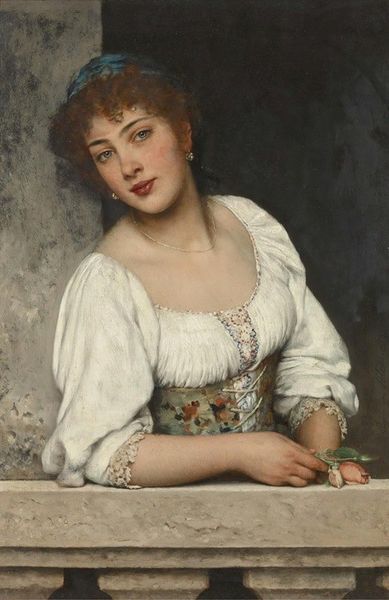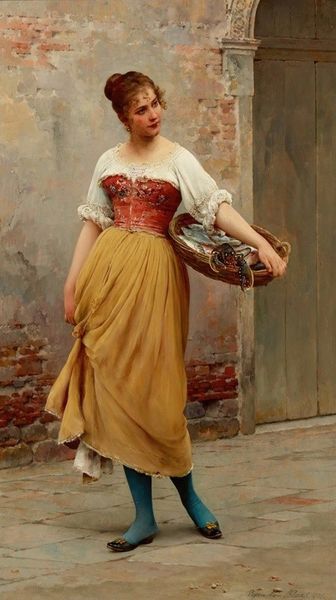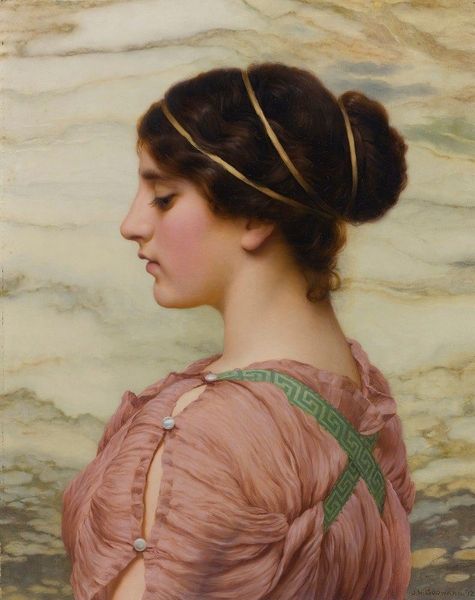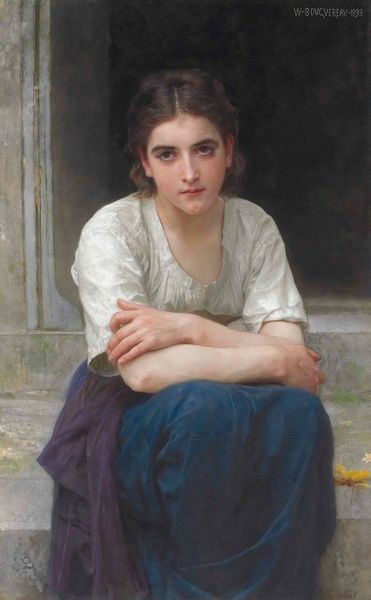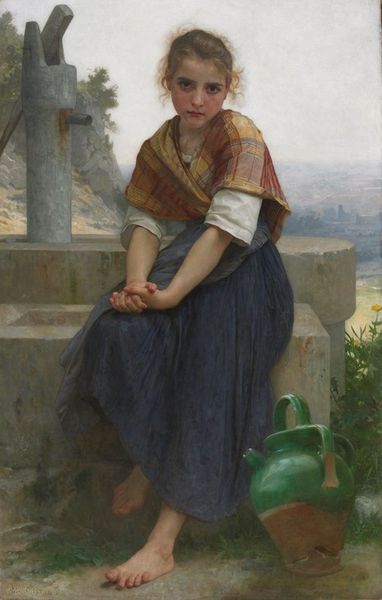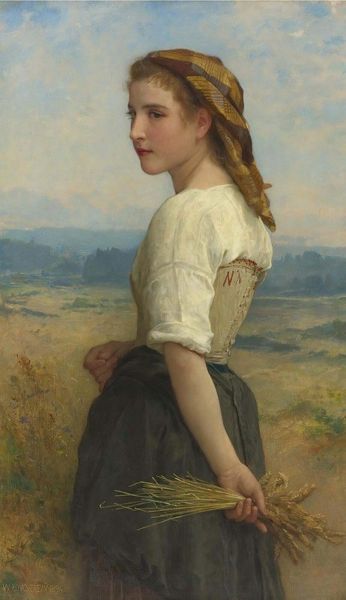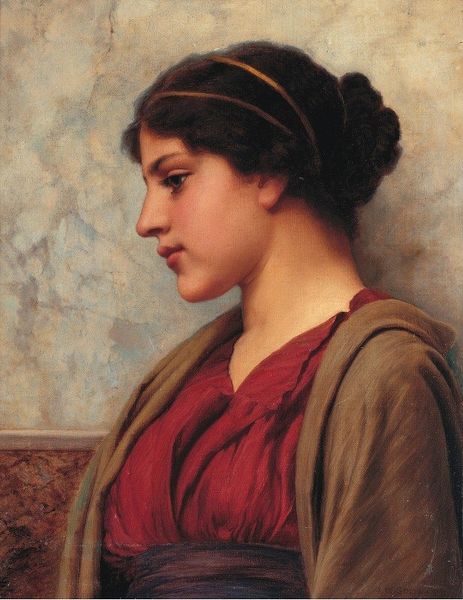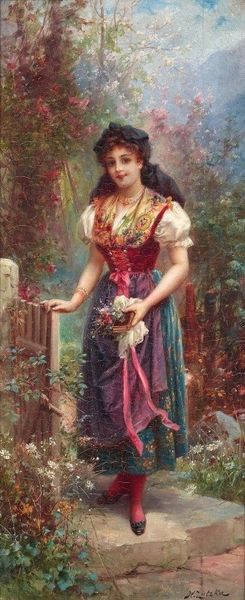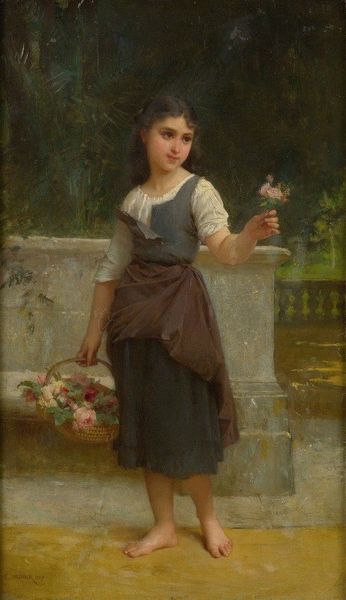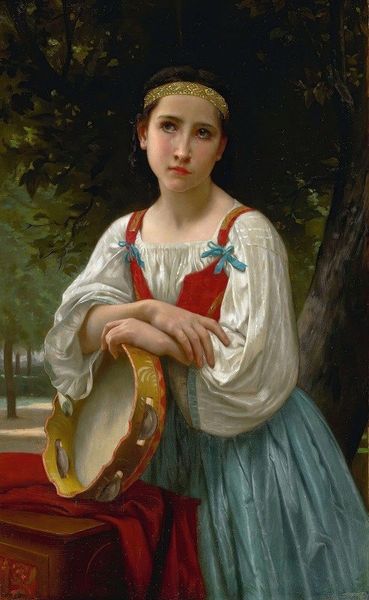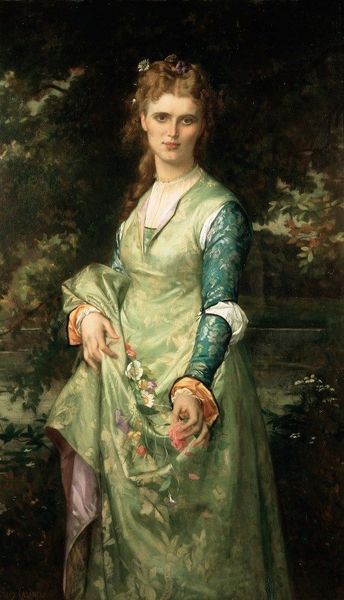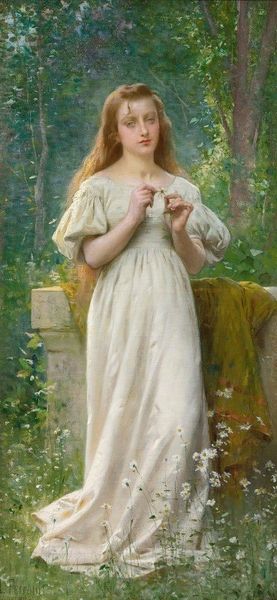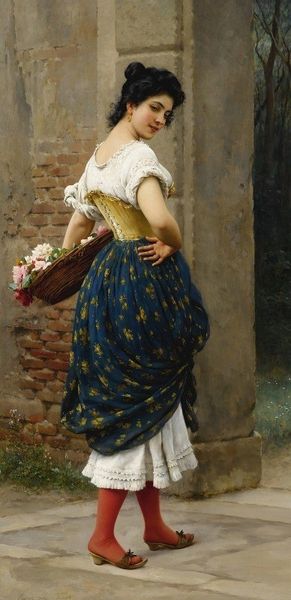
#
figurative
#
portrait reference
#
portrait head and shoulder
#
animal portrait
#
animal drawing portrait
#
portrait drawing
#
facial portrait
#
portrait art
#
fine art portrait
#
celebrity portrait
#
digital portrait
Copyright: Public Domain: Artvee
Curator: Frederic Leighton's "Amarilla" presents a portrait of a woman gazing serenely outward, her posture exuding a sense of restrained calm. What are your first impressions? Editor: I'm immediately drawn to the textural contrast. The velvet jacket against the diaphanous dress, and the cool smoothness of her skin juxtaposed with the patterned headscarf; Leighton really uses those elements to give the portrait a real tangible depth. Curator: Absolutely. This work is really evocative of its time, isn't it? One way to view this portrait, for instance, is to understand the late Victorian idealization of women and their role as guardians of virtue. Editor: Tell me more about this "guardian" reading of it? Curator: Well, her gaze is not one of overt sexuality but rather one of gentle observation. Her posture also indicates a sense of decorum that was highly valued in women during the Victorian era, reflecting perhaps that society's aspirations. Editor: But looking more deeply at the formal construction, it's evident in how Leighton positions the figure in relation to the setting that he wants to evoke the Italian Renaissance in terms of painting styles and aesthetic approaches. The way the background blurs allows for the character in the front to jump out, with the help of dramatic shadowing on her outer clothing. Curator: Yes, there is an interesting dynamic at play here, since one can explore the possible intersection between the visual culture that Leighton creates and the Victorian context from which the figure arises. This isn't just a question of technical choices but a question about representation. What identities does it emphasize? What elements might have become lost, obscured, or made taboo during this era? Editor: It is striking how the artwork engages our gaze through tonal arrangements, textures, light play... and also opens up social narratives that relate specifically to historical contexts. The ability to tie both together is critical for interpretation, ultimately giving it cultural meaning. Curator: Indeed. Hopefully, viewers will be encouraged to view artworks using a lens where social implications, materiality, identity, and technique blend in meaningful ways. Editor: Ultimately, "Amarilla" highlights that engaging deeply with the historical or political context in art is, at the same time, about seeing art through the lens of technique.
Comments
No comments
Be the first to comment and join the conversation on the ultimate creative platform.
